
All categories
Featured selections
Trade Assurance
Buyer Central
Help Center
Get the app
Become a supplier

(7252 products available)








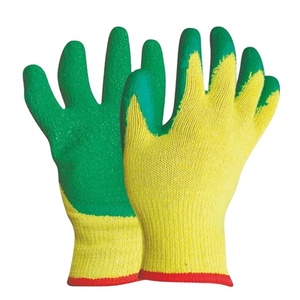
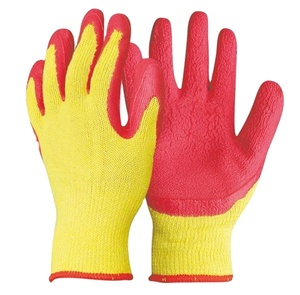














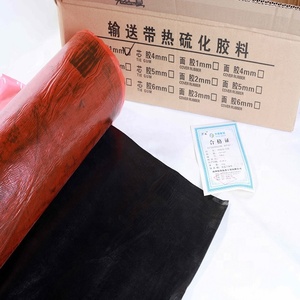


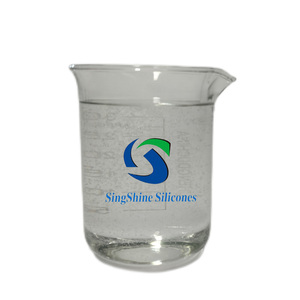


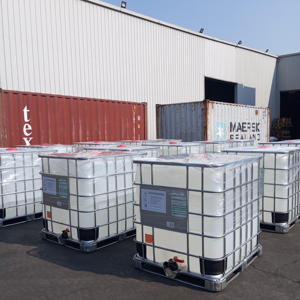


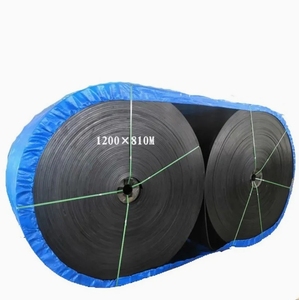





Supplier and buyer, alike, should know that there are several types of intermediate rubber, as each serves distinct uses.
This type of rubber combines the qualities of plastics and elastomers. It is easily processed, making it a go-to for several producers. This rubber serves various uses in the automobile and medical industries. In the auto sector, it is used for weather stripping, seals, and tubing. In the medical space, it is good for catheters and other medical hoses.
Nitrile rubber is a copolymer of acrylonitrile and butadiene. It is valued for its strong resistance to fluids, especially petroleum-based products. Commonly used in automotive applications, nitrile rubber seals, and gaskets protect against oil and fuel exposure. The aerospace sector also uses nitrile rubber for O-rings and seals, as it retains flexibility at low temperatures.
EPDM is an acronym for ethylene propylene diene monomer. It is synthetic rubber that resists heat, weather, and ozone. These materials make it suitable for outdoor and automotive seals, gaskets, and insulating glazings. Builders use it in roofing membranes and window seals for durability and weather resistance.
Neoprene is a synthetic rubber used in various applications due to its versatility and resistance to weathering, ozone, and certain chemicals. Companies use neoprene in automotive parts like belts and hoses. They also use it in gaskets, seals, and insulating materials in construction. Additionally, it is used in wetsuits and medical supports in sports and healthcare.
Suppliers should note that SBR stands for styrene-butadiene rubber. This is a synthetic rubber commonly used in tires. It is also used in other automotive components due to its durability and abrasion resistance. So, this rubber improves traction and wear in tire treads. The footwear industry also uses it in shoe soles for flexibility and longevity.
Buyer should also note that intermediate rubber has wide use in many realms.
In the auto industry, rubber hoses and seals are used to transport fluids like oil, water, and fuel. Their elasticity ensures a good fit, preventing leaks and absorbing vibrations. This enhances smooth functioning and user comfort. Nitrile rubber's oil resistance makes it ideal for auto gaskets and seals. These prevent fluid leaks, protecting engine parts and ensuring safety and efficiency.
For tires, industrial rubber combined with other materials gives puncture resistance. Pioneers also enhance tires using steel belts and cord fabrics that improve safety and durability. In car interiors, pieces like door seals use thermoplastic rubbers for a soft touch. They reduce noise and air leaks, giving a quiet and comfy ride.
Pioneers use rubber medical hoses to transport fluids safely. They use EPDM and thermoplastic elastomer rubber that withstands heat and sterility. It ensures chemicals do not react with the fluids or compromise the medical materials. Flexible rubber gaskets and seals in containers also safeguard sterility by blocking air and contaminants. This protects vital medical gear and drugs during storage and transport.
Rubber works well for us in low and high volume medical parts. They are favored for their resilience and ability to withstand repeated sterilization cycles. So, they remain durable while still serving their function. Medical devices also utilize rubber-like catheters. They are comfortable and flexible, allowing the safe transportation of fluids within the body.
They use rubber hoses to transport cement and mortars. In heavy construction, tires and tracks use rubber for their durability on rough terrains. Rubber roofing membranes help protect the structures from leaks and weather elements. This is because the rubber is strong and able to resist ozone and water. They also use it in window seals for better insulation.
Finally, neoprene and butyl rubber aid in construction vibration dampers. They help absorb vibrations and reduce noise from nearby vehicles, railways, or heavy equipment. This creates a quieter work environment for the laborers.
Elasticity and Flexibility
The key feature of intermediate rubber is elasticity. This quality enables it to stretch and return to its normal state. Producers use this elasticity in parts like seals, gaskets, and hoses. It ensures a good fit, accommodating equipment that vibrates or experiences temperature changes.
Durability and Resilience
Producers favor intermediate rubber material for its exceptional durability. It withstands wear and tear from constant use. This resilience ensures that rubber components have a long service life. This durability lowers the frequency of replacements in automotive and industrial applications.
Chemical Resistance
Intermediate rubber's resistance to many chemicals is a key feature. It makes it ideal for auto parts exposed to oils, fuels, and other corrosive substances. Nitrile and butyl rubbers, for instance, resist petroleum-based products and harsh chemicals. This protects vital components from degradation.
Temperature Resistance
Intermediate rubber can maintain its properties across a wide temperature range. This quality makes it suitable for use in environments subject to extreme heat or cold. For instance, EPDM rubber used in automotive seals maintains flexibility and durability. It does this even with constant heat exposure.
Abrasive Resistance
They use industrial rubber for tires and other components that come into contact with rough surfaces. Its abrasion-resistant properties ensure that these parts do not degrade quickly in use. Inter-rubber materials for heavy machinery also have abrasion resistance. It ensures safety and performance in rugged construction sites.
The installation process for intermediate rubber parts varies by application.
Automotive Applications
Auto manufacturers first clean the area where the rubber component will be installed. Next, they remove any old parts and ensure the surface is smooth and free of debris. For installing rubber seals or weather stripping, they apply adhesive or use pre-adhesive rubber. They then press the rubber firmly to ensure a snug fit.
For rubber hoses, auto manufacturers connect the hose ends to the appropriate fittings. They ensure the hose is properly aligned. After that, they secure it in place using clamps or the appropriate tools. They verify the installation by checking the hose or seal for leaks.
Industrial and Construction Uses
In construction and industrial settings, installation often involves larger rubber components. People will install these components using heavy machinery. They first measure and cut the rubber to fit the required space during installation. They then use adhesive or mechanical fasteners to secure the rubber to the frame.
Tires, for example, go on heavy equipment by aligning the rubber with the wheel rim. They then use a mounting machine to ensure the tire is installed correctly. They then inflate it to the proper pressure.
Medical Equipment
The installation process focuses on ensuring a sterile environment. Techs clean the parts and use sterilized gloves to install rubber seals or gaskets in medical devices. They do this to avoid contamination.
Maintenance
To maintain the intermediate rubber components' durability, users regularly inspect them. They check for any visible signs of wear, like cracks or abrasions. Once they identify these signs, they ensure there is a clean environment. This protects the rubber from further damage.
They also keep the rubber parts away from direct sunlight. Excessive exposure degrades the materials. To prevent chemical-related deterioration, buyers store the rubber away from oils and solvents. These substances harm the rubber components. They also ensure the temperature remains consistent. Fluctuations in temperature adversely affect the rubber's flexibility and elasticity.
Repair
Users usually do minor repairs in-house. They patch small holes or cracks using repair kits. For significant wear or damage, they replace the affected parts promptly. This is to prevent further damage to adjoining equipment. They also store spares conveniently for swift and effective repairs.
Finally, for complex repairs or critical components, they consult experienced technicians. They have the right tools and methods to undertake proper repairs on time.
Off-Gassing
During the fabrication and use of intermediate rubber, gases may exit the rubber. This is known as off-gassing. Some of these gases may be harmful. So, to avoid this, ensure the workspace has good airflow. Buyers can also use personal protective gear when installing intermediate rubber parts. This helps protect them from inhaling toxic gases.
Fire Hazard
Inappropriate handling of rubber materials poses fire risks. In case rubber products come close to fire or heat sources, it could ignite or produce harmful fumes. Always keep the operating space free of sharp items. It minimizes the chances of penetrating or cutting exposed rubber. It also reduces contact with flame or electrical equipment.
Material Composition
Intermediate rubber manufacturers usually use different base polymers. This is to ensure they have the right qualities. For instance, EPDM contains ethylene, propylene, and diene. Nitrile rubber contains butadiene and acrylonitrile. Each of these materials serves distinct uses. The way these material mix influences the final rubber's durability and abrasive resistance.
Chemical Compatibility
Any intermediate rubber that comes into contact with fuels, oils, and solvents should be made with rubber. This rubber has good chemical resistance. Nitrile and butyl rubbers, for example, have excellent resistance to petroleum-based products.
Temperature Resistance
The rubber selected should be able to retain its characteristics across a wide range of temperatures. EPDM, for example, works well for this. It is suitable for automotive seals and gaskets that regularly experience heat and cold.
Mechanical Properties
Strong and flexible rubber components guarantee quality. Tire rubber, for example, should have high tensile strength and excellent abrasion resistance. This will ensure safety and performance.
A1: A key benefit of intermediate rubber is that it can maintain its properties across a wide range of temperatures. EPDM rubber, for example, retains its flexibility even when exposed to extreme heat or cold. This quality makes it suitable for automotive seals and gaskets that endure fluctuating temperature environments. Keeping the rubber components functional ensures they preserve their effectiveness for a long time.
A2: Intermediate rubber products are sensitive to temperature, hence, weather, and mishandling. To preserve their integrity, transportation environments should have a stable temperature. Also, use suitable packaging materials to prevent physical harm during transit. Whether in bulk or small quantities, use cushioning materials to reduce impact and ensure safe delivery.
A3: Intermediate rubber withstands oils, fuels, and several chemicals, for example, butyl and nitrile rubber. This resistance makes them ideal for components that come into direct contact with these substances in the automotive and industrial sectors. It ensures the rubber does not degrade and keeps its desirable qualities.
A4: Rubber manufacturers use different base polymers and add additives during production of intermediate rubber. It helps enhance various material properties. These materials mix in different ratios to ensure the rubber has strength, elasticity, and chemical resistance. This influences the rubber's overall performance and durability.
A5: Users should indicate key maintenance practices. They include regular inspection, storage in a controlled environment, and avoidance of chemicals. Doing these things helps prevent degradation, wear, and tear. Proper maintenance ensures that the rubber components remain functional. It extends their lifespan for many uses.